|
PV solar collector efficiencies range from 4 to 7% for amorphous and 14 to 17% for crystalline silicon panels. Increase of panel efficiency is the main reason why the idea of PV-T (photovoltaic-thermal) has been investigated further this last decade.
BIPV-T systems (building integrated photovoltaic - thermal) make use of the remaining 83-96% of incidental solar energy through providing additional thermal energy for water heating. These panels increase PV efficiency by reducing cell temperatures (temperature) rise |
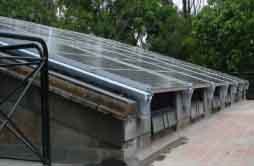 | decreases cell eff. ~0.5%/K varying for different cell types). |
- Several air-air systems have been researched:
- glass- glass photovoltaic modules with /without ducts for recovering heat (remaining solar radiaton is absorbed by dark coloured surface after the air gap)
- glass- tedlar photovoltaic modules with /without ducts for recovering heat (remaining solar radiaton is absorbed by the opaque tedlar increasing directly cell temperature)
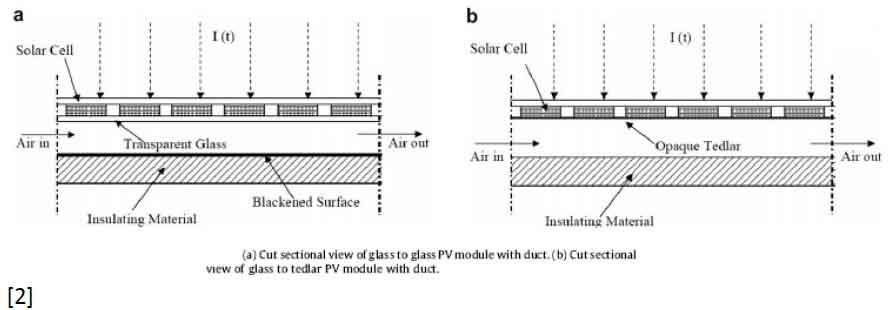
Efficiencies of technologies researched are the following:
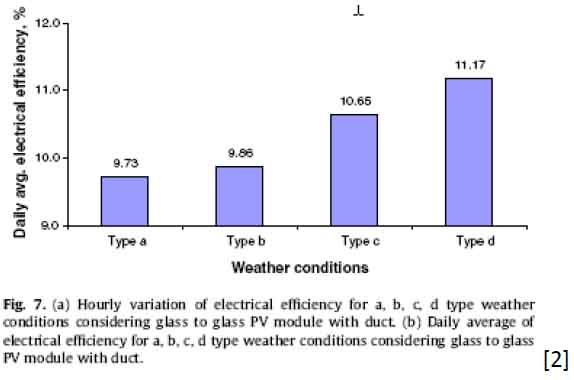
| BIPV-Ts may be applied on various roof surfaces reducing significantly the heating demand in colder seasons. BIPV-Ts are capable of preheating ambient air and work together with ventilated concrete slabs (thermal mass) in order to store heat. This heat absorbed by thermal mass avoids overheating issues releasing heat gradually in the evening. |
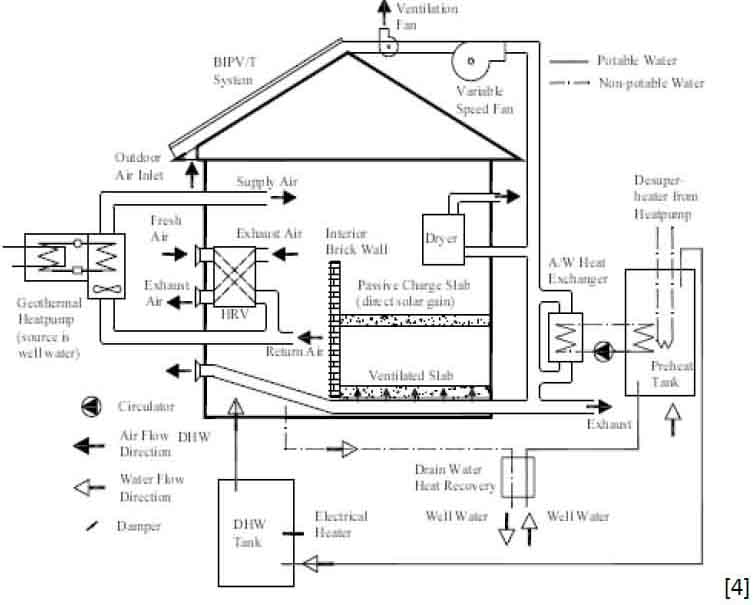
- Water systems seem to maintain higher performances (fluids improve heat recovery rates).
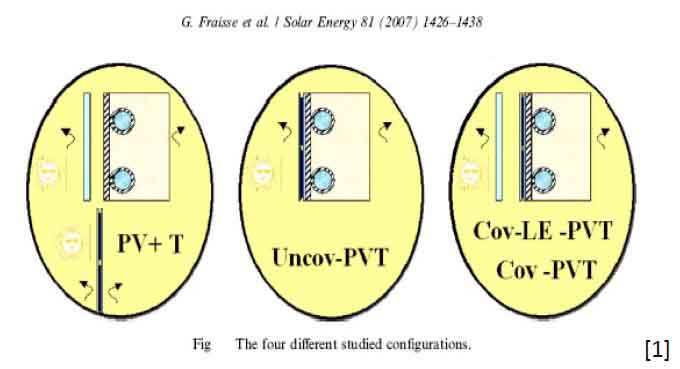
- Advantages & Disadvantages of BIPV-T systems
- Reliability due to increased temperatures approaching stagnation levels
- Decrease of cell efficiency occurs especially when higher water temperatures are required when connected to domestic hot water (DHW) systems
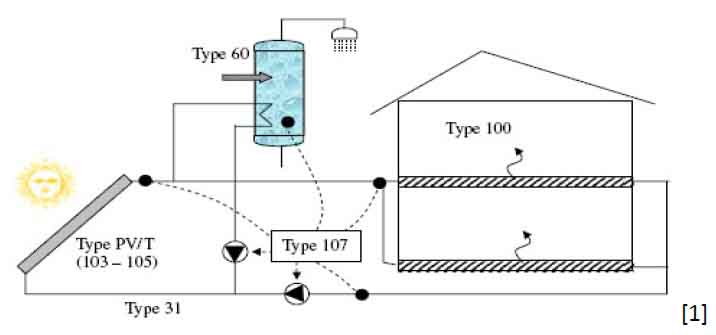
- Managing temperature inputs-outputs
The cooling effectiveness of water circulating and exchanging heat with PV cells is strongly related to its temperature. Systems operating in lower temperatures provide higher electricity outputs. When considering conventional heating systems (i.e. radiators) there needs to be a fine line drawn between optimal operating PV and water output temperature levels. A glazed BIPV-T is more appropriate including amorphous cells as their efficiencies are less effected by temperature. An interesting alternative regarding thermal-electrical energy generation is BIPV-Ts connected to a Direct Solar Floor. This is a combined system ideal for optimum electrical generation due to the fact that It operates at low temperatures (35ºC). Controls operate similarly as in conventional solar collector systems. Circulation is switched on or off according to temperatures of the collector output, floor loop return and domestic water tank.. In the case of a combi system a hybrid collector is utilised for domestic hot water as well as for directly heating the floor mass (meaning no extra tank is required).
BIPV-T systems considered could be uncovered cells, covered with conventional glass or low-e glass. Refrigerant liquids reduce temperature of the panels. However only the uncovered have a higher efficiency (~10%) when compared to conventional systems with the covered ones' efficiency being significantly reduced.
| 